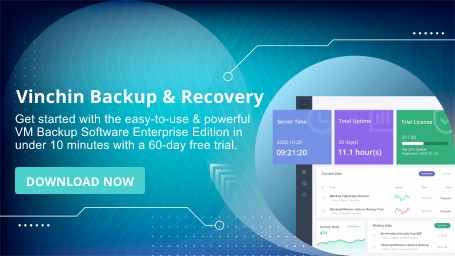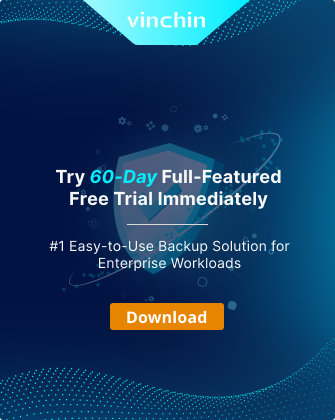-
What Is a VMware Reporting Tool?
-
Top 10 VMware Reporting Tools
-
How to Protect VMware VM Data with Vinchin
-
VMware Reporting Tools FAQs
-
Conclusion
With the widespread adoption of virtualization technology, VMware has become a core component of enterprise IT architecture. However, when faced with massive clusters of virtual machines, complex resource allocations, and dynamic performance data, administrators often find themselves drowning in a “sea of data.”
VMware reporting tools have emerged to meet this challenge by transforming scattered performance metrics into actionable insights through automation and visualization, becoming a key instrument for optimizing resources, planning capacity, and ensuring stability. This article will cover the definition of these tools, their core values, mainstream solutions, and common issues to help you efficiently manage your VMware environment.
What Is a VMware Reporting Tool?
A VMware reporting tool is software or a script designed specifically for vSphere environments. It automates the collection, analysis, and presentation of usage data for virtualization resources—including key metrics such as CPU, memory, storage, and network. Its core functions include:
Data Aggregation: Integrating performance logs from vCenter, ESXi hosts, and virtual machines.
Visual Analysis: Generating charts, trend lines, and dashboards to intuitively display resource utilization.
Report Generation: Supporting customizable templates and exporting reports in PDF, Excel, or HTML formats.
Automated Scheduling: Regularly generating reports and sending them to specified email addresses or management systems.
Unlike monitoring tools—which focus on real-time alerts and anomaly detection—reporting tools concentrate on historical data analysis and trend forecasting, serving long-term planning.
Top 10 VMware Reporting Tools
1. VMTurbo
VMTurbo is an intelligent tool that focuses on resource optimization and capacity planning. Its main function is to monitor and analyze the resource utilization of virtualization environments in real time (such as CPU, memory, and storage), use algorithms to predict future demands, and automatically generate reports with recommendations for hardware expansion or virtual machine migration.
Advantages:
Provides dynamic resource allocation recommendations, optimizing hardware efficiency.
Supports multi-dimensional trend analysis, forecasting capacity needs for the next 3–6 months.
Integrates automated workflows, reducing manual intervention.
Disadvantages:
High enterprise licensing costs, posing budget pressures for small and medium teams.
Complex initial configuration, requiring support from a professional team.
Applicable Scenarios:
Suitable for medium to large enterprises needing long-term resource planning and cost optimization.
2. RVTools
RVTools is a lightweight data collection tool. Its primary function is to quickly connect to the vCenter server, export configuration and performance data for virtual machines, hosts, storage, and more to Excel, and provide health check capabilities.
Advantages:
Completely free, running as a single file without installation.
Broad data coverage, capable of generating a full environment snapshot within 5 minutes.
Disadvantages:
Lacks automated report generation and visualization capabilities.
Relies on manual processing of Excel data, resulting in lower efficiency.
Applicable Scenarios:
Ideal for temporary audits, rapid troubleshooting of configuration issues, or obtaining raw data.
3. vCheck
vCheck is an automated reporting framework based on PowerCLI. It primarily generates HTML reports using pre-built script plugins and supports scheduled email delivery, covering checks for virtual machine status, storage capacity, network configuration, and more.
Advantages:
Open-source and free, with over 200 customizable check plugins provided by the community.
Flexibly adapts to complex scenarios, such as custom performance threshold alerts.
Disadvantages:
Requires proficiency in PowerShell and PowerCLI development.
The report interface is basic, making it difficult for non-technical users.
Applicable Scenarios:
Ideal for technical teams that require highly customized reports and possess scripting development capabilities.
4. Opsview Pro
Opsview Pro is a multi-protocol monitoring and reporting tool. Its main function is to display VMware and network device performance data through visual dashboards, and it supports pre-built templates for resource usage trend reports.
Advantages:
Drag-and-drop dashboard design, making it user-friendly for non-technical users.
Supports monitoring of hybrid environments (including VMware, physical servers, and network devices).
Disadvantages:
The professional version charges per node, with a minimum of 50 nodes, resulting in high costs.
Limited deep analysis capabilities, requiring integration with other tools.
Applicable Scenarios:
Suitable for cross-platform monitoring needs and management reporting scenarios.
5. AsBuilt Reports
AsBuilt Reports is an open-source configuration documentation tool. Its primary function is to transform the configurations of VMware, storage, and network devices into standardized documents (Word/HTML) that meet compliance audit requirements.
Advantages:
Free and open-source, supporting multi-vendor environments.
Standardized output formats that can be directly used as deliverable documentation.
Disadvantages:
Generates only static configuration reports, without performance trend analysis capabilities.
Requires learning YAML syntax to define report templates.
Applicable Scenarios:
Ideal for IT audits, system handovers, or compiling compliance documentation.
6. XIA Configuration
XIA Configuration is a pre-built template-based reporting tool. It quickly generates standardized PDF/Excel reports using over 20 out-of-the-box report templates (such as virtual machine inventories and host configuration comparisons).
Advantages:
User-friendly interface with the ability to export reports in just three steps.
Supports cross-platform configuration comparisons (Windows/Unix/VMware).
Disadvantages:
Advanced features require commercial licensing, with opaque pricing.
Custom field extensions depend on vendor support.
Applicable Scenarios:
Best suited for small to medium teams that need to quickly generate routine operations reports.
7. vRealize Log Insight
vRealize Log Insight is VMware’s official log analysis tool. It aggregates log data from vSphere environments and provides real-time search, interactive dashboards, and pre-built compliance reports.
Advantages:
Natural language search to quickly pinpoint fault logs.
Supports integrated analysis with vRealize Operations.
Disadvantages:
Focuses on log analysis, with relatively weak resource performance reporting capabilities.
Requires an additional purchase of the vRealize suite license.
Applicable Scenarios:
Ideal for root cause analysis for failures and tracing security incidents.
8. CloudPhysics
CloudPhysics is a cloud-based SaaS analysis tool. It displays performance bottlenecks in VMware environments through “data cards” and provides hardware health prediction reports.
Advantages:
No need for local deployment; analysis results are generated as soon as data is uploaded.
The free version meets basic needs.
Disadvantages:
Functional modules are fragmented, lacking systematic report output.
Data must be uploaded to a third-party cloud, raising security concerns.
Applicable Scenarios:
Suitable for short-term performance evaluations or quick validation of optimization solutions.
9. PowerCLI
PowerCLI is VMware’s official command-line management tool. Its primary function is to use PowerShell scripts to call vSphere APIs, allowing for customized data collection and report generation logic.
Advantages:
Completely free, with unlimited flexibility.
Can be integrated with external tools such as Excel and databases.
Disadvantages:
Requires programming skills with a steep learning curve.
Lacks a built-in visualization interface, leading to high development costs.
Applicable Scenarios:
Best for developers or senior administrators who require full control over reporting logic.
10. Sexigraf
Sexigraf is an open-source monitoring tool designed for vSAN. Its main function is to collect performance metrics from vSAN clusters and generate specialized reports—such as storage latency and health scores—via Grafana.
Advantages:
Completely free, with active community support.
Deeply optimized for vSAN metric analysis.
Disadvantages:
Only supports vSAN environments, limiting its general applicability.
Requires self-maintenance of the Grafana service.
Applicable Scenarios:
Ideal for vSAN users who need detailed storage performance reports.
How to Protect VMware VM Data with Vinchin
Although VMware monitoring tools can help enterprises monitor the operating status of their virtualization environments in real time, optimize performance, and provide early warnings of potential risks, they cannot fundamentally solve issues of data loss or system crashes. Therefore, while ensuring the stable operation of the VMware environment, it is equally crucial to establish a reliable data protection strategy.
Vinchin Backup & Recovery offers an efficient, stable, and easy-to-manage backup solution for VMware virtual machines. It employs an agentless backup technology, eliminating the need to install a client on every virtual machine and achieving efficient backups while significantly reducing resource consumption. Moreover, its incremental backup and forever incremental backup prevent duplicate storage, thereby optimizing backup efficiency. Additionally, Vinchin uses snapshot-based CBT technology to accurately identify and back up changed data, ensuring the integrity of backups and enabling rapid recovery.
In terms of data security, Vinchin features multi-layer protection mechanisms, including ransomware protection, encrypted backup data, and backup data replicas and archiving. These measures effectively reduce the risks of data leakage and malicious tampering. Whether facing local failures or remote disasters, Vinchin ensures that business operations can be swiftly restored, minimizing downtime.
Its user-friendly web-console will help you easily create a VM backup job in 4 steps.
1 Select VMware VM
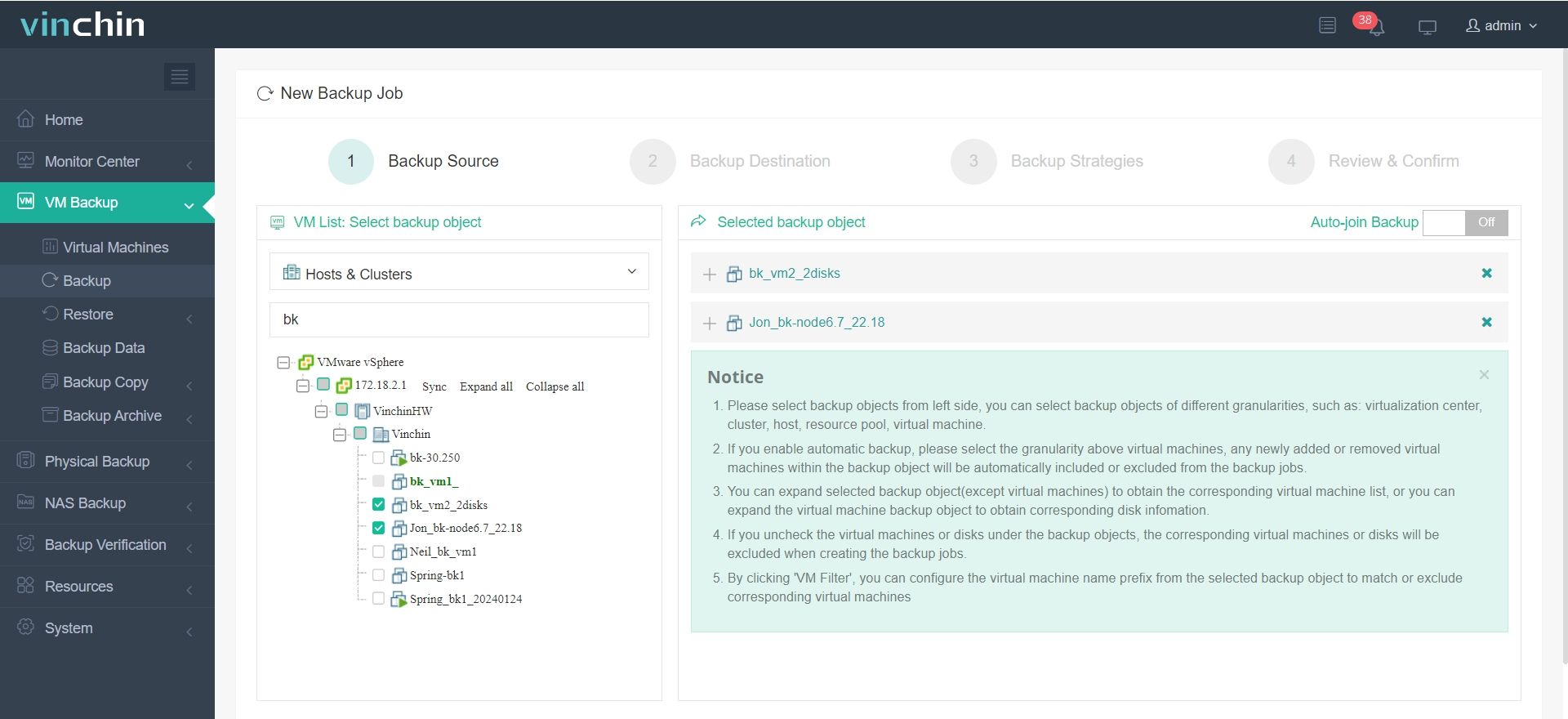
2 Select backup storage
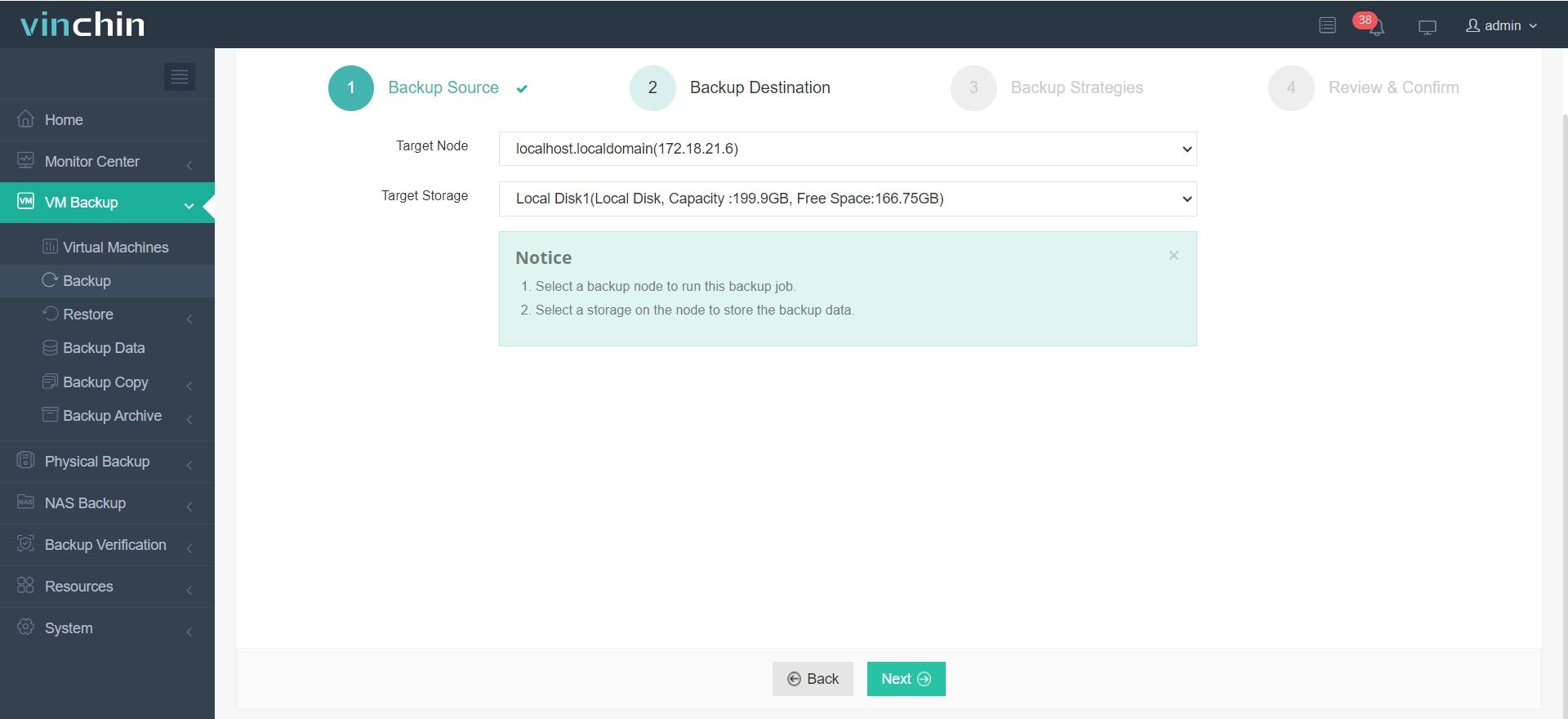
3 Select strategies
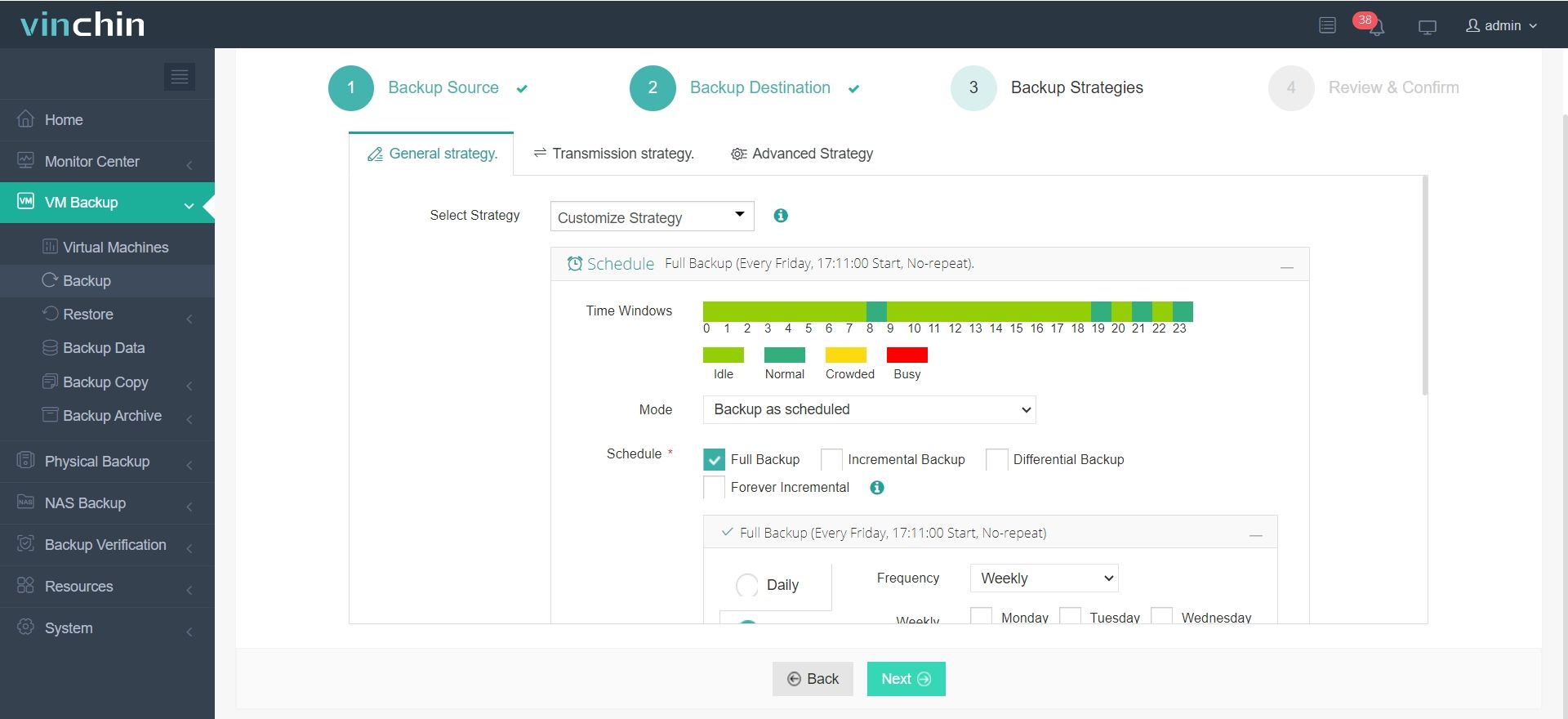
4 Submit the job
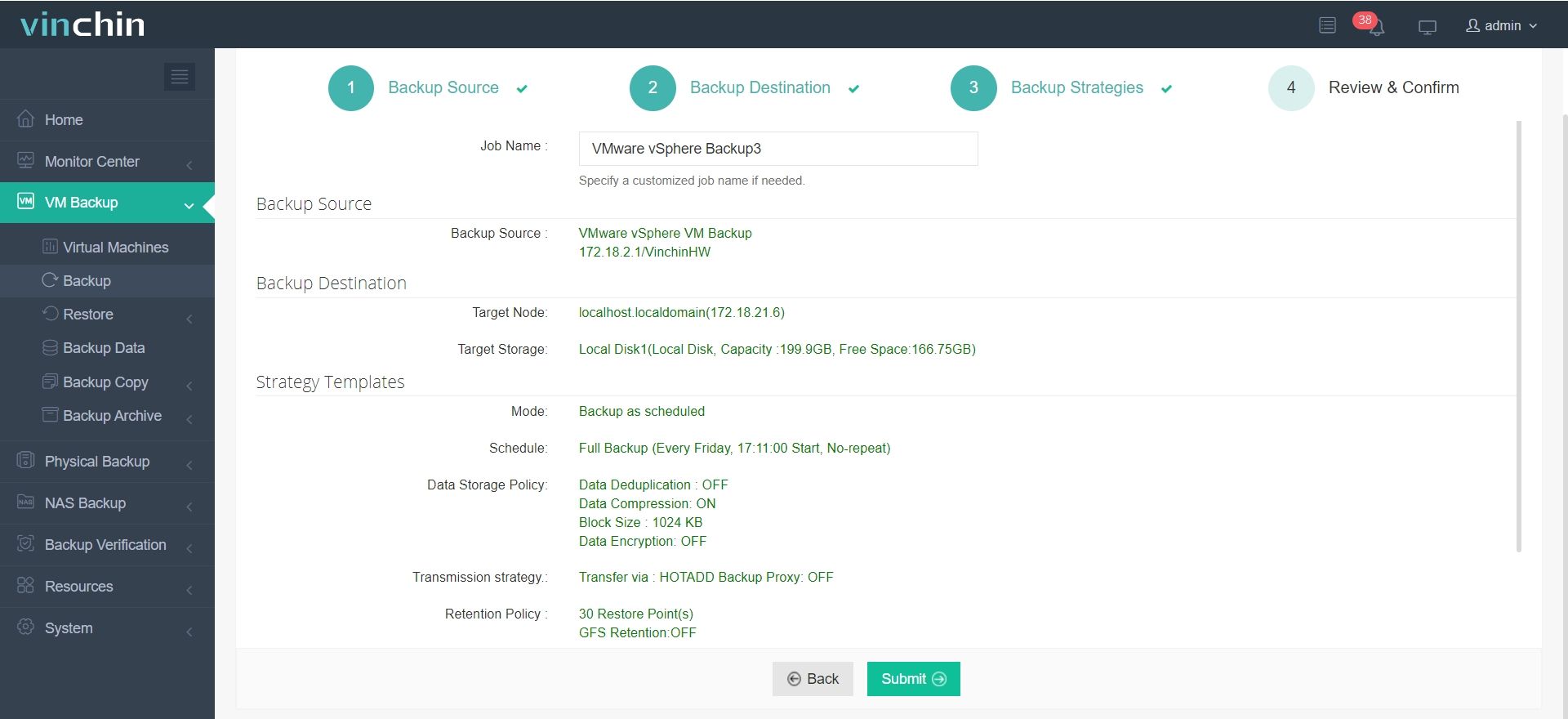
Compared with traditional backup methods, Vinchin’s one-stop management interface greatly reduces operational complexity, allowing enterprises to centrally manage all backup tasks on a single platform and improve backup efficiency through intelligent scheduling and automation strategies. Whether for small and medium enterprises or large data centers, Vinchin offers flexible backup solutions to help build a more secure VMware data protection system.
You can click the button below to download the installation package and start a 60-day free trial immediately.
VMware Reporting Tools FAQs
1 Are there free and user-friendly reporting tools?
There are indeed many free VMware reporting tools. For example, RVTools can export complete data to Excel for free, which is suitable for manual analysis; likewise, vCheck’s scripts are free, though they require technical skills.
2 Do reporting tools conflict with monitoring tools (such as vCOPS)?
Typically, reporting tools and monitoring tools do not conflict; they complement each other. Monitoring tools focus on real-time anomalies, while reporting tools emphasize historical analysis and planning.
3 Can reporting tools replace manual inspections?
Automated reports can cover 80% of routine needs, but complex issues still require manual intervention.
Conclusion
VMware reporting tools are essential assistants for improving virtualization management efficiency. For small and medium teams, it is recommended to start with RVTools or XIA Configuration to quickly generate basic reports; for medium to large enterprises, investing in VMTurbo can achieve automated analysis and resource optimization. If development flexibility is a priority, PowerCLI and vCheck are ideal choices. Ultimately, the value of any tool depends on how precisely it aligns with your business objectives—rather than striving for an all-encompassing feature set, focus on solving real pain points and letting data truly drive your decisions.
Data protection is also important. Vinchin Backup & Recovery is one of the best solution for VMware backup and don’t miss out on the free trial.
Share on:


